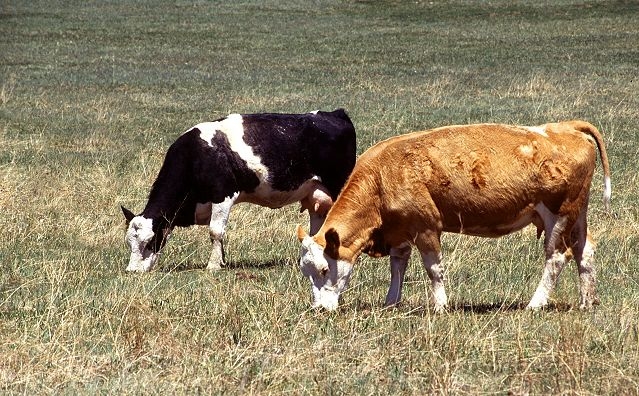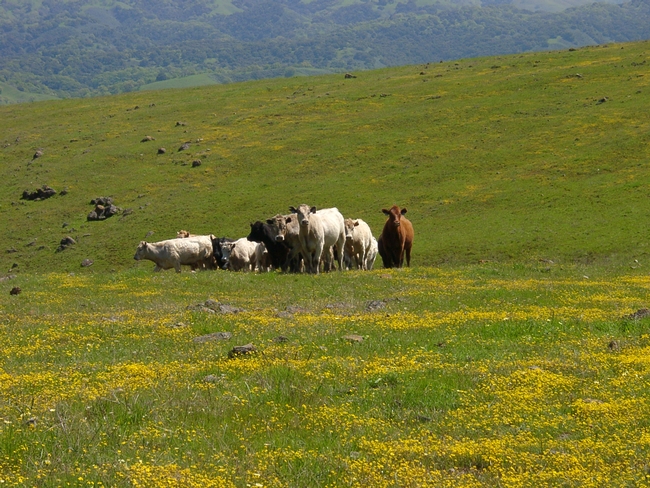Posts Tagged: Sheila Barry
Impact of grazing livestock on public lands under drought conditions
Poor management of grazed rangelands can "exacerbate the effect of drought," the report said.
The Forest Service identified the need to reduce cattle numbers on public land during a severe drought - in come cases to 50 or 70 percent of total carrying capacity, which is the number of animals the land can support before causing environmental degradation. Plants that have been overgrazed "are less able to recover after a drought," the report said.
For expert commentary, Danovich turned to a UC Agriculture and Natural Resources (UC ANR) source. Sheila Barry, the livestock and natural resources advisor for UC ANR Cooperative Extension, said ranchers do have to reduce herd size in times of extreme drought.
Cattle that graze on the open range are usually finished at a feed lot. In the first year of drought, ranchers have the option of weaning cattle early to reduce demands on the land without reducing the herd size. In the second year of drought, ranchers have to consider cutting into their herds. "As soon as they do that," Barry said, "it can take up to eight years to build it back."
Grazing is good for public lands
The author, Sheila Barry, the natural resources and livestock advisor for UC ANR Cooperative Extension in the Bay Area, wrote that overgrazing and impacts to riparian woodlands are legitimate concerns, but have been effectively addressed with modern range management practices. Ranchers can minimize harmful impacts by maintaining proper stocking rates, creating riparian pastures, limiting grazing in sensitive areas and adding off-stream water sources.
Barry delineated a series of beneficial impacts of cattle grazing on Bay Area parklands. She said grazing minimizes wildfire hazards, manages non-native annuals, prevents thatch build up, promotes flowering plants, and improves carbon sequestration.
Barry added that no documented plant or animal species extinction has been linked to cattle grazing in California. On the contrary, numerous threatened and endangered species rely on grazing and rancher stewardship, including Santa Cruz tar plant, Contra Costa goldfields, Sonoma spineflower, San Joaquin kit fox, California tiger salamander, California red-legged frog, Ohlone tiger beetle, and Bay checkerspot and Callippee silverspot butterflies.
The magazine also included a "con" argument, written by Karen Klitz, a member of the Western Watersheds Project board of directors, and Jeff Miller, a conservation advocate with the Center for Biological Diversity and director of the Alameda Creek Alliance. The authors say grazing is incompatible with conservation because damage wrought by livestock is not a thing of the past. Klitz and Miller cite research showing that removing cattle can restore trout populations, native songbirds, wildflowers and amphibians. Grazing cessation at Mount Diablo State Park decreased weedy species and increased native grassland species and supports 16 rare or endangered wildlife species, the article said.


